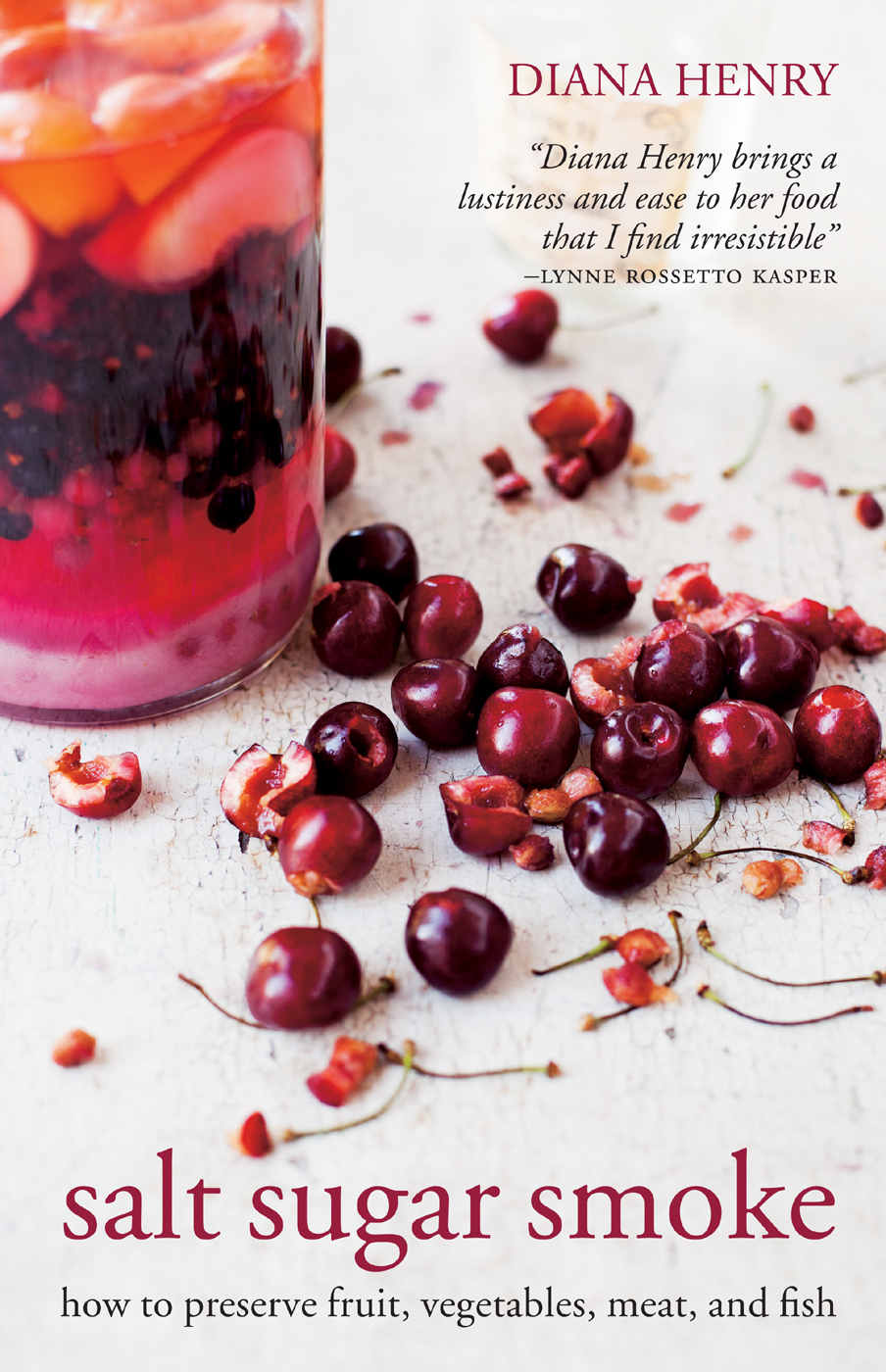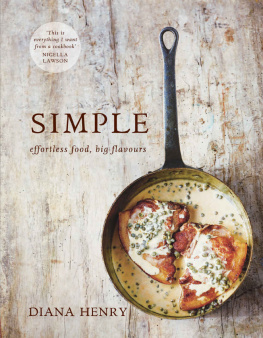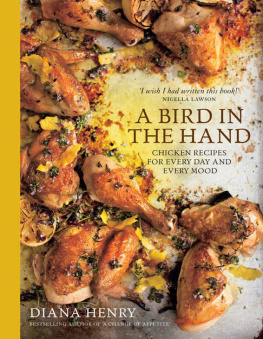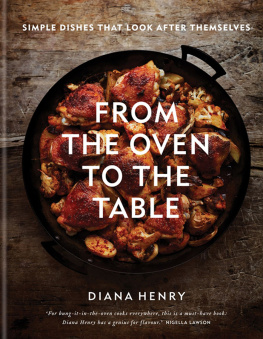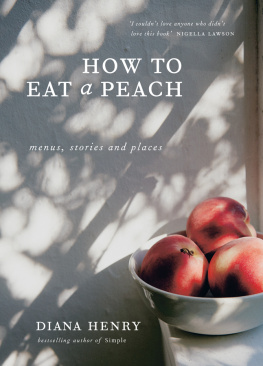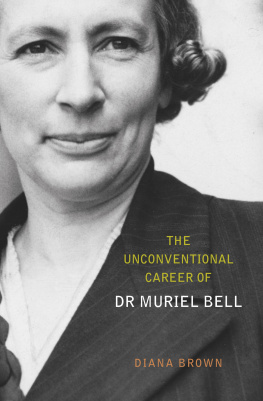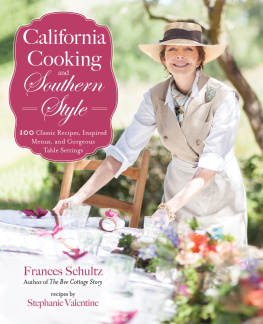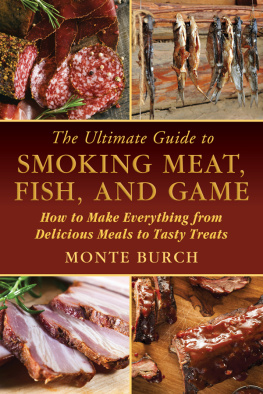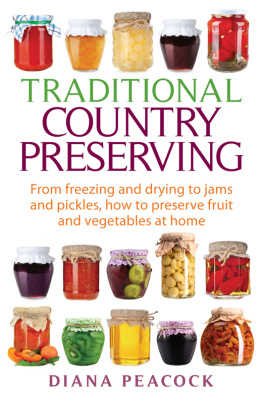salt sugar smoke
how to preserve fruit,
vegetables, meat and fish
DIANA HENRY
MITCHELL BEAZLEY
contents
how to use this ebook
Select one of the chapters from the and you will be taken to a list of all the recipes covered in that chapter.
Alternatively, jump to the to browse recipes by ingredient.
Look out for linked text (which is in orange) throughout the ebook that you can select to help you navigate between related recipes.
introduction
Lifelong loves take hold early on. My mum did a lot of baking when we were growing up, and I have a clear memory of sitting on the countertop in our small kitchen as she sliced warm wheaten bread and spread a piece with raspberry jam for me. The jam was made by Aunt Sissy, who wasnt an aunt at all, but an elderly family friend and a tremendous preserver. That jam was better than any fruit I ever tasted fresh. Aunt Sissys jams were soft set and ran off the bread. They were so loved, we only ate them on homemade bread or in a sandwich. At home, we seemed to be surrounded by great jam and chutney makers and we loved getting jars from them.
So I always appreciated preserved foods, and I have been preserving this or thatchutney, gravlax, pork rillettes (a kind of pt)since I was in my mid-teens. But preserving is the kind of cooking you always feel experts do. I felt I needed to have an indenture period, to spend, like Aunt Sissy, every day of the summer with kettles on the go. Several years ago I decided to do this. I wanted to improve skills I already had, to understand why I followed certain rules, to make up my own recipes, to feel confident about salting herrings and duck. Salt Sugar Smoke is the result of a rigorous exploration and a long journey. For three years, I preserved food every day, often well into the night. My laundry room filled up with jars. The refrigerator became home to slabs of bacon and chunks of beef. I discovered I could go my own way. It may be traditional in Great Britain, where I live, to use equal quantities of sugar and fruit to make firm-set, sweet jams. However, they make soft-set jams in France and lower sugar jams in Scandinavia, so I made the kind of jams I preferred: soft-set and not too sweet.
I am a home cook. I dont have masses of special equipment and I dont do things on a grand scale. A lot of the literature that existed on preserving was off-putting. I didnt want to turn my shed into a smokery. I could never manageand would never needto cure a whole pig. I have done everything in this book in a gentle way and didnt spend much on new equipment. I bought an additional kettle, some more wooden spoons, a wide funnel for pouring jams through, a lot of measuring cups, a big plastic box (a storage box from IKEA) to use for brining, and a little stove-top smoker.
Then I started my journey. I had, as the saying goes, a ball. I discovered that preserving made you feel as if you were more than just a cook. There were days when it reminded me of being on my grandparents farm. It felt as if I was presiding over something natural that had its own momentum, but which I had a hand in. Fish and pork changed because of the application of salt, for example, and I oversaw this and took it to the next stage. There was a tremendous thrill in producing food that was more than a meal. Like a child in a craft class, I have always loved making things, and preserving and curing produced that feeling about a hundred times over. And the food was delicious. People have always preserved because they needed toit was about survival. However, the reason we still bother to do it at home is because the end products taste so good.
My daily cooking changed. There were so many different condiments on the go that I did a lot of plain meals using these as embellishments: rice and vegetable dishes with chutneys, roasts with relishes, simple cakes with sumptuous fillings of unusual jams. I have always thought that home cookingespecially the quick kind we do a lot these daysis about accessorizing. We have to think of something good to do with a pork chop or a piece of fish.
I want everybody who reads this book to feel they can preserve and do some basic curing. However, to get the best out of it, please read the chapter introductions before you embark on the recipes. They give you the know-how and are there to be referred to. Ive tried to keep them simple, while conveying the salient points. Be careful about hygiene, which is essential. Be aware that you are making foods that can spoil, so use your senses to tell you when something is off. The recipes have been tested according to the sterilizing and potting practices followed in Great Britain, where jams and chutneys are not treated in water baths, but, if you are using this book in North America and want to store these products without refrigeration (most will keep in the refrigerator short term), you may want to use the guidelines given for processing your jars in a water bath; this advice has been adapted in the relevant recipes for the American reader. You can also find general information on the process for .
Label and date what you make: When you labour over twenty jars of something, you feel sure you will always know whats in them, but you wont. Remember that some recipes cant be exact, so have extra sugar on hand, for example, when making jellies, in case the fruits release more juice for you than they did for me.
Many books are written these days about how to think about food in a more caring way. Preserving aligns itself with these to some extent, because it is partly about using bumper crops and not squandering abundance. However, this book is not a manifesto. This kind of cooking takes time and is outside the everyday business of getting a meal on to the table. I dont expect everybody to do it. But if you already enjoy cooking, or even if you just have a penchant for making things, preserving is incredibly satisfying.
It could seem grandiose to talk about what makes a good life in a book that is simply a collection of recipes. But for me, one of the constituents of a good life is the ability to find pleasure in the small things. A good jam for your toast in the morning. A chutney that is made from apples you gathered last fall. Cutting corned beef that youve made and can feed to friends. These are seemingly unimportant things, and they wont change the world, but the sum of happiness in ones life is often made up of such details. Theres a jar of jam on your table. If it is jam that has been made with care, that comes from fruit you picked, that is delicious and starts your day off well, it is much more than just a jam. Andhonestlyyou can make it.
There are riches there, lad, fortune enough for all the country round, but not a soul sees it! Anton Chekhov,

